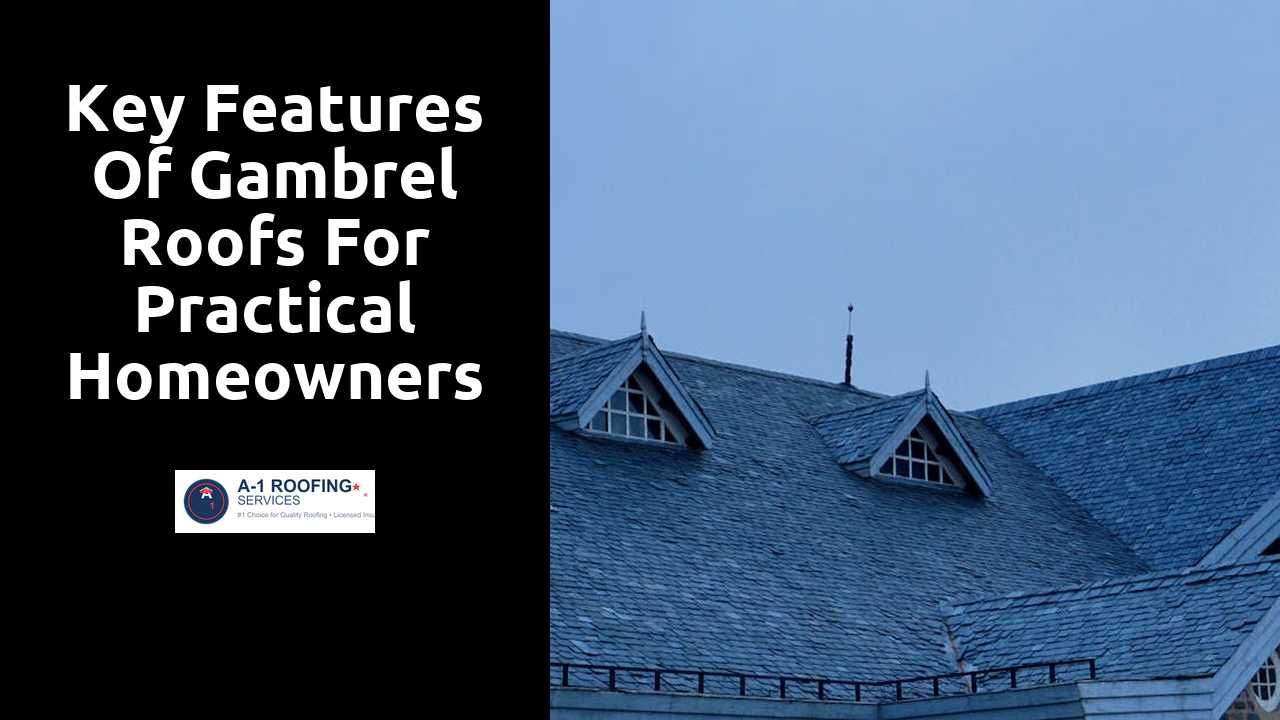
Key Features of Gambrel Roofs for Practical Homeowners
Table Of Contents
Versatility in Architectural Styles
Gambrel roofs are characterized by their distinctive two-sided slopes, which allow for a combination of aesthetic appeal and functional advantages. This unique structure provides a sense of rustic charm while complementing various architectural styles, from traditional colonial homes to modern interpretations. The roof's symmetry and inclination can enhance the visual interest of a building, making it an attractive choice for homeowners looking to showcase their property.
Homeowners can easily adapt gambrel roofs to fit their specific design vision. The roof's shape invites creativity, allowing for the integration of dormer windows or expansive overhangs. This flexibility enables the roof to harmonize with different siding materials and color palettes. As a result, gambrel roofs can maintain their relevance across diverse architectural trends and personal preferences, making them a timeless option for various home designs.
Continue reading this article for more information.
Customization Possibilities for Various Home Designs
Gambrel roofs offer a unique opportunity for homeowners to personalize their living spaces in ways that traditional roof styles may not allow. These roofs can be adapted to fit various architectural designs, including colonial, barn-style, and modern interpretations. By altering the pitch of the roof slopes or varying the eaves' height, homeowners can achieve both aesthetic appeal and functional benefits tailored to their specific needs. This adaptability also makes gambrel roofs suitable for different regional styles, aligning them seamlessly with local architectural influences.
Many homeowners appreciate the flexibility of materials when constructing a gambrel roof. From classic wood shingles to modern metal elements, the choice of materials can enhance both visual character and structural integrity. Finishing touches such as dormers or ornate trim can be easily integrated into the gambrel structure without compromising the overall design. This wide array of customization options allows homeowners to create a distinct identity for their residence while ensuring the roof complements the surrounding environment.
Weather Resistance and Durability
A gambrel roof is designed to endure various weather conditions, making it a practical choice for homeowners. Its steeper slopes allow snow and rain to slide off easily, reducing potential water damage and the risk of leaks. This feature enhances its long-term reliability, particularly in regions prone to heavy snowfall or rainfall.
The materials commonly used in gambrel roof construction further enhance its durability. Many homeowners opt for asphalt shingles, metal roofing, or even slate, which offer strength against harsh elements. Proper installation and maintenance of these materials can significantly extend the roof's lifespan, ensuring lasting protection for the home.
Materials that Stand Up to the Elements
Homeowners considering a gambrel roof often prioritize durability to withstand varying weather conditions. Traditional materials like asphalt shingles are popular due to their affordability and ease of installation. They typically come with warranties lasting up to 30 years, making them a practical choice. Metal roofing, on the other hand, is gaining traction among those seeking long-lasting solutions. This option can resist harsh winds and heavy snowfall, providing a robust shield against nature's elements.
Wood shingles and shakes offer a natural aesthetic but require regular maintenance to maximize their lifespan. While they can endure rain and moderate snow, they are less resilient to moisture damage and may need treatment against pests. Concrete tiles are another alternative, known for their superior durability and ability to mimic the appearance of traditional materials. Regardless of the choice, selecting the right material is crucial for ensuring that a gambrel roof performs effectively over time.
Historical Significance of Gambrel Roofs
Gambrel roofs have deep roots in American architectural history, tracing back to the colonial era. Their design is often associated with Dutch settlers who introduced this unique style to North America. The shape not only provided an aesthetically pleasing profile but also maximized the use of attic space, which was particularly advantageous for early homes. Many barns and farmhouses incorporated gambrel roofs, emphasizing their practical utility in rural communities.
As America transitioned through various architectural movements, gambrel roofs maintained their popularity due to functional benefits and visual appeal. By the 19th century, this roof style became synonymous with iconic buildings, from colonial homes to modern interpretations. The versatility of gambrel roofs allowed them to evolve alongside changing tastes, making them a prominent feature in many historical neighborhoods across the country. This enduring relevance highlights their significance in shaping the American landscape.
Evolution in American Architecture
Gambrel roofs gained prominence in the 18th century, becoming a defining characteristic of Dutch Colonial homes. Their unique design offered additional attic space while maintaining a symmetrical appearance. This architectural style spread across New England and was embraced by various regions, adapting to local preferences and materials. Homeowners appreciated the aesthetic appeal and functionality, making gambrel roofs a popular choice during the early stages of American architecture.
As the nation progressed into the 19th century, the gambrel roof began to evolve further. Builders started to incorporate the style into barns and farmhouses, creating an iconic silhouette that became synonymous with American rural life. The combination of practicality and charm allowed the design to thrive, influencing subsequent architectural movements. Even today, gambrel roofs continue to inspire modern designs, showcasing their lasting impact on the architectural landscape.
Related Links
How to Choose a Shed Roof for Your PropertyThe Appeal of Flat Roofs for Modern Homes